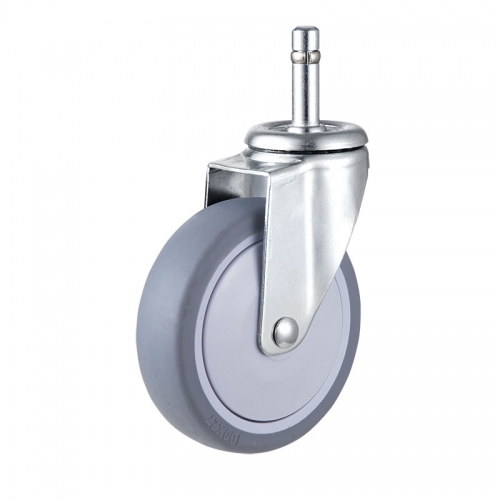At present, the custom surface treatment of industrial casters generally adopts two methods of galvanizing and electrophoresis. These two methods are widely used, and benefit from their obvious advantages, as follows:
Advantages of galvanized surface treatment
1、The processing cost is low, and the cost of galvanizing and rust prevention is lower than that of other paint coatings;
2、strong anti-rust performance, industrial casters after galvanizing treatment is not easy to rust for many years;
3、the reliability is good, the galvanized layer and the steel are metallurgically combined to become part of the steel surface, so the durability of the coating is relatively reliable;
4、The coating has strong toughness, and the galvanized layer forms a special metallurgical structure, which can withstand the mechanical damage that the industrial casters are designed to be used during exercise and use;
5、comprehensive protection, each part of the plated parts can be galvanized, even in the universal wheel, industrial casters custom recesses, sharp corners and hidden places can be fully protected;
6、does not affect the welding, the metal surface can still be welded after galvanizing treatment, such as: spot welding after assembly.

Electrophoretic surface treatment advantages
1、high strength, when the temperature is 150 ° C baking, the hardness can reach 3-4H;
2、good leveling, strong paint film, good slippery film;
3、the bonding force and penetration are good, the coating is non-porous, and the wet film and dry film have strong bonding force;
4、resistance to discoloration and anti-corrosion performance, when the baking temperature reaches 180 ° C -190 ° C workpiece does not change color, so the industrial caster custom products lasting bright color, excellent corrosion resistance;
Industrial industrial caster customization usually refers to an industrial caster custom product used in mechanical equipment or factories. For industrial industrial casters, a single wheel made of reinforced nylon (PA6), super polyurethane and rubber can be used. The industrial industrial caster custom products are integrated. High impact resistance and strength. User operations are important to operate without overloading. When the goods are heavier, put them on the car. Driving at high speeds on rough roads or hitting the wheels with heavy objects can cause damage to the wheels or equipment. Therefore, check regularly:
Brackets and Fasteners: Tighten the loose axles and nuts and check that the brackets are twisted. Overloading or impacting can cause the brackets to twist and twist. The brackets cause the heavy loads to tilt against the individual wheels and cause premature wheel damage. Customized industrial casters of the plunger type should be tightened or tightened tightly to ensure that the equipment mounting bracket is not bent and the plunger is installed correctly. Locking nuts or lock washers should be used when customizing industrial casters. The expansion of the insert type industrial casters is customized to ensure that the plunger is securely mounted in the sleeve.
Lubrication: Lubricate regularly (normally every six months) to ensure long-term use of wheels and moving bearings. Applying grease to the seals, the axles and the frictional parts of the roller bearings reduces friction and makes the rotation more flexible. The wheels should be lubricated after cleaning the car.
Wheels: Observe the wear of the wheels. Whether the wheels are not rotating smoothly, the rotation is not always related to the rope and other debris, and the anti-wrapping can block the entanglement of these debris. After checking the replacement of the wheel, tighten the axle with a locknut. Loose axles can cause the spokes to rub against the bracket and become stuck.













